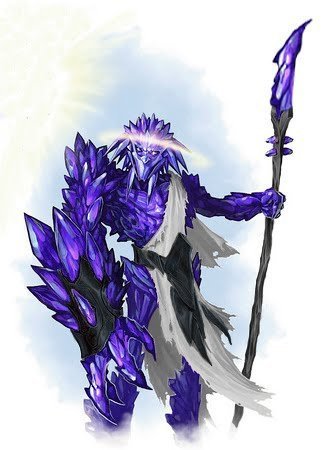

The "Basic" Dungeons & Dragons line introduced the Mystic, a counterpart to the AD&D Monk, in the Master Set as available from first level. For example, humanoids could become shamans and witch doctors, which were functionally equivalent to clerics and cleric/magic-users except highly limited in terms of maximum level advancement. First Edition did have a few "quasi-classes" which acted in a similar fashion.

Their abilities were not normally laid out very specifically, leaving more to the Dungeon Master's improvisation. Most NPCs did not technically have a class in 1st and 2nd edition they were, instead, "0th level characters" or "hirelings." Most classes gained the ability to attract and recruit hirelings at 9th level and later others could be hired for a fee. Dragonlance Adventures presented alternative classes for Knights of Solamnia (Knight of the Crown, Knight of the Sword and Knight of the Rose) and Wizards of High Sorcery, as well as the Tinker class, which is exclusive to Gnomes. The other major book that offered new base classes was the 1985 version of Oriental Adventures it included the Bushi, Kensai, Ninja, Samurai, Shukenja, Sohei, Wu Jen, and Yakuza. The Barbarian and Cavalier both had revised treatment in Dragon Magazine #148. Many existing classes were also drastically reworked and given different abilities. The thief-acrobat, barbarian, and cavalier had previously appeared in Dragon magazine. Unearthed Arcana also included the cavalier class as "alignment champions" and reworked Paladins to be a subclass of Cavalier. Among other changes, it included the thief-acrobat, a Thief subclass, and the barbarian, a Fighter subclass which had abilities such as summoning a horde of fellow barbarians to any location. Eventually, some of these alternative rules came to be compiled in 1985 in the volume Unearthed Arcana. Additionally, various alternative base classes, subclasses and rule changes were offered in the magazine Dragon and elsewhere, such as the Mystic and the Witch. The Strategic Review - Volume 2, Number 1Īdvanced Dungeons & Dragons 1st edition įive standard base classes and five subclasses were offered in the Player's Handbook, with an optional 6th base class, the Bard, presented in an appendix. The Strategic Review - Volume 1, Number 4 The Strategic Review - Volume 1, Number 2 New subclasses were introduced in Supplement I - Greyhawk, Supplement II - Blackmoor, Supplement III - Eldritch Wizardry and the Strategic Review. Two new classes were introduced after the release of the original D&D boxed set: Thieves in Supplement I - Greyhawk and Bards in The Strategic Review. 4 Advanced Dungeons & Dragons 2nd edition.2 Advanced Dungeons & Dragons 1st edition.


 0 kommentar(er)
0 kommentar(er)
